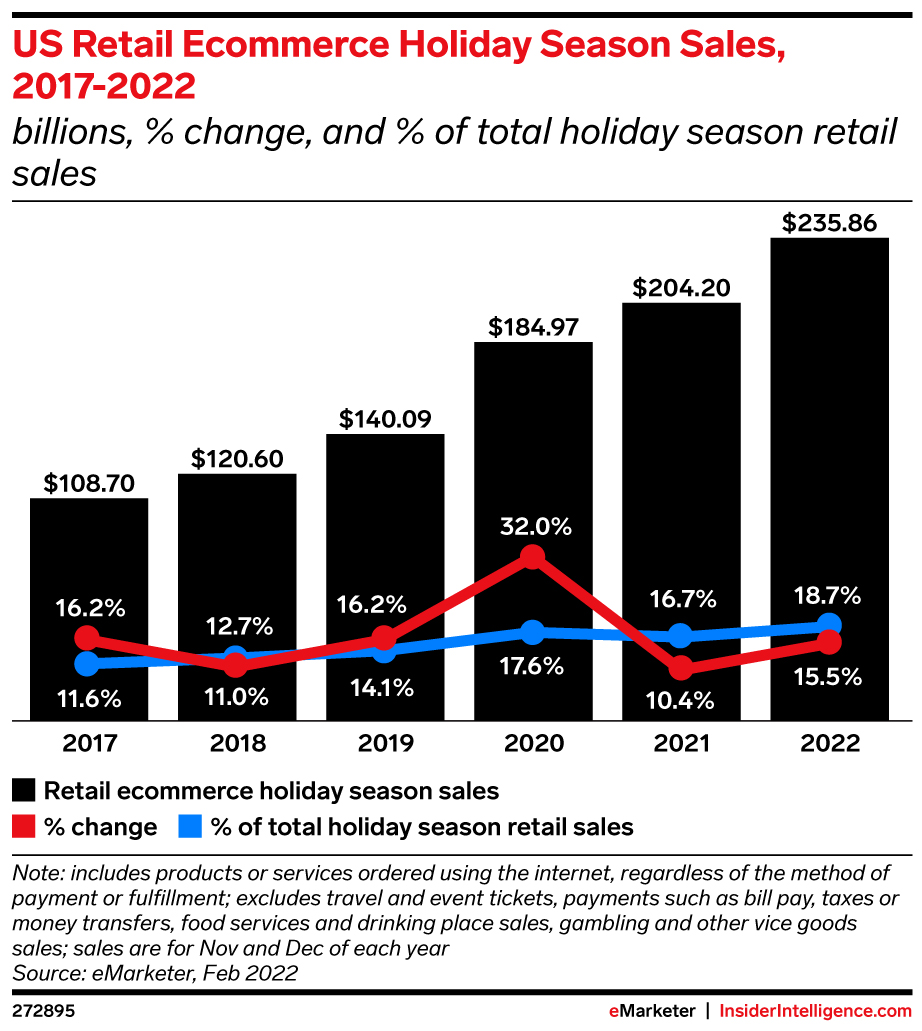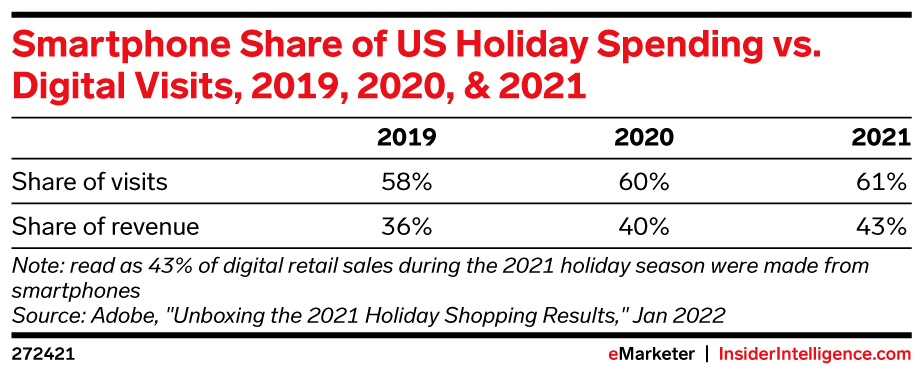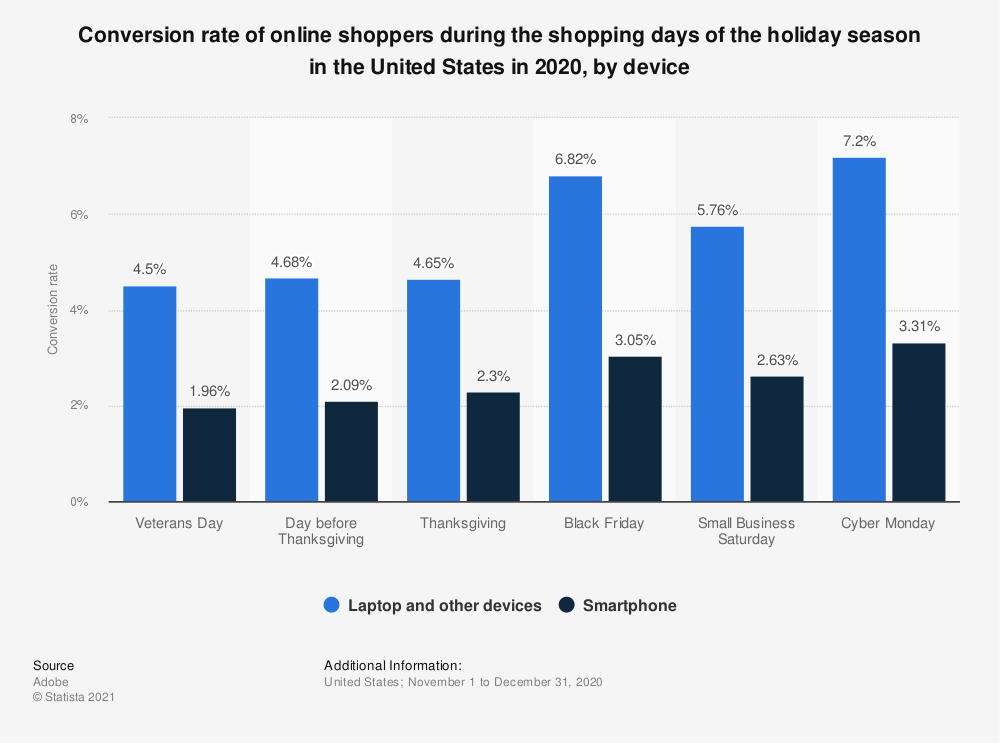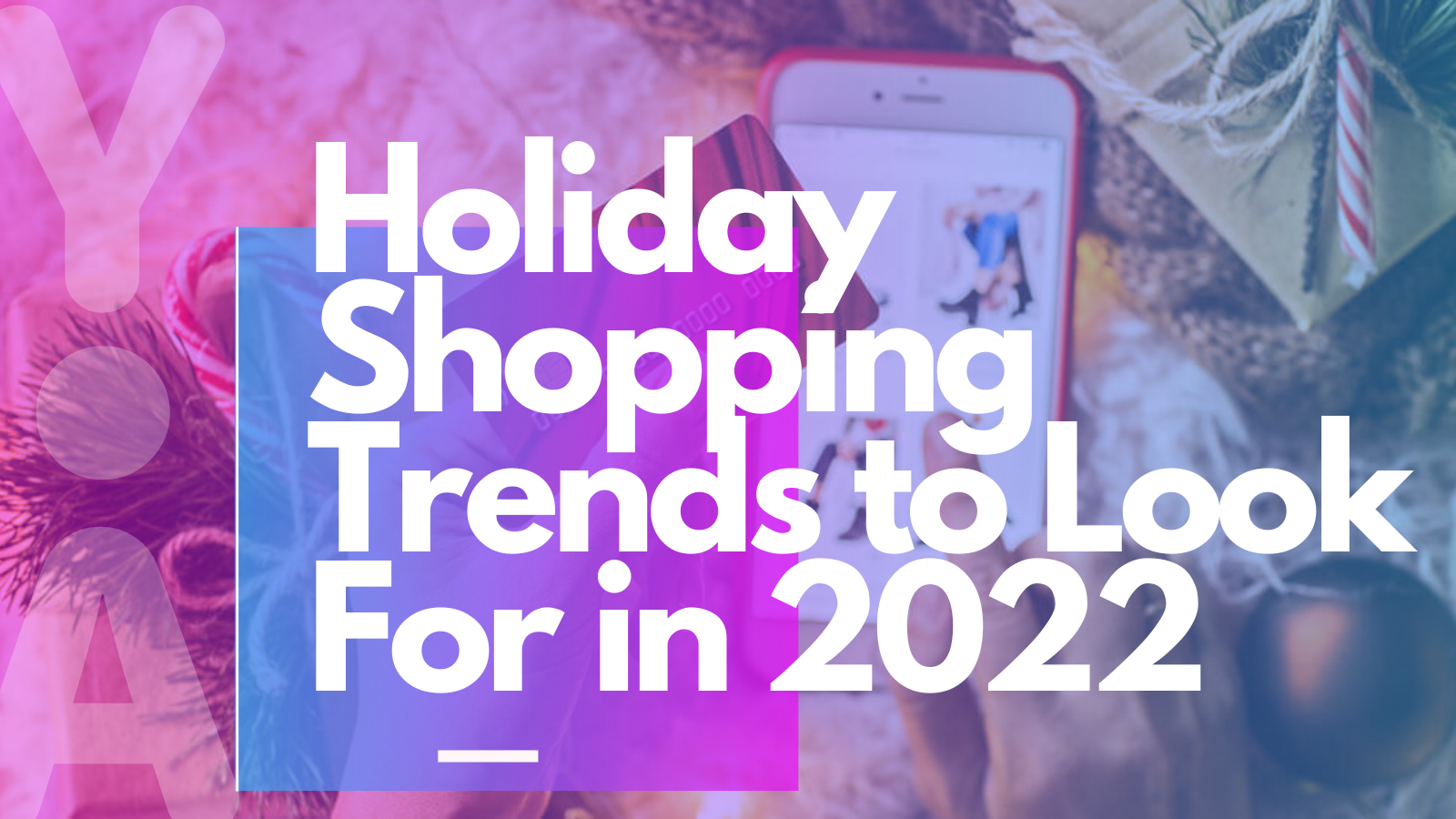It’s called the most wonderful time of year for a reason, and it might be because most brands drive the majority of their annual sales during it. The holiday shopping season is upon us and it’s time to start planning your holiday cross channel marketing strategy now!
In this guide, you’ll learn the most important trends to prepare you, your brand and your app for the 2022 holiday shopping season. We’ll also give you three tips for what you can do today to kickstart your cross-channel marketing strategy. If this guide is helpful, stay tuned for our upcoming Holiday Growth Guide for even more insights on how to best prepare your brand for record-breaking sales in the 2022 holiday season.
The top 2022 holiday shopping season mobile app trends
Total sales and mobile commerce
We know we say it every year, but this year holiday mobile commerce will break records. Retail sales in the U.S. this holiday season are projected to drive $1.262 trillion in revenue. This represents a 3.3% increase from 2021.
Retail, specifically, will drive just under $236 billion of this total. This represents approximately 18.7% total holiday sales and 15.5% increase in revenue from 2021.
{Note: when we isolate for the retail category, we’re describing purchases that don’t include tickets for travel or events, food or drink sales, etc. see the note in the graph below for more information.}

Source: Insider Intelligence
Every year, mobile devices make up a growing proportion of holiday ecommerce sales. In fact, in 2021, 61% of shopping visits and 43% of revenue were driven by mobile devices.

Source: Insider Intelligence
The 2022 holiday shopping season will push these trends even further. Current forecasts predict mcommerce sales will hit $116.98 billion, or 49.6% of overall 2022 holiday ecommerce sales. That means 2022 will likely be the last year mobile devices don’t drive a majority of holiday sales.
Purchasing Mobile App Trends
Along with mobile commerce trends and cross channel marketing strategy, it's important to review current purchasing trends. There’s no question there have been recent economic headwinds in the wake of inflation and supply chain delays. These trends have shifted consumer spending in notable ways.
Inflation constrains consumer spending
Inflation has been on the rise across global markets although consumer spending has yet to fully internalize the impact of it. Going into the 2022 holiday season, it’s safe to assume consumers will have less expendable cash in the face of inflation drivers like low unemployment, rising wages, and supply constraints.
Consumers are making holiday purchases earlier
It seems the holiday shopping season gets earlier and earlier every year. In 2021, many brands launched Black Friday promotions as early as October, driving a surge in pre-Thanksgiving shopping activity. According to a 2021 survey, 56% of US adults began holiday shopping before Thanksgiving weekend. Half of those people (28%) kicked off their holiday shopping even before November entirely. Because of this trend, the highly-anticipated Cyber Five shopping period — e.g. the five days from Thanksgiving to Cyber Monday — fell short of expectations. Because spending had started so much earlier, sales were less concentrated during the November shopping season.
In addition to brands launching early promotions as a mobile app trend, supply chain delays might also incentivize shoppers to get their orders in early. That being said, this year should see fewer delays as shipping timelines and inventory shortages even out following the pandemic-induced supply chain crisis.
Changing ad measurability affects prices
Given privacy changes and restrictions to data granularity, the business of performance marketing gets more complex and competitive every year. This is indicated in mobile ad prices, which have risen sharply. According to Adjust, the median eCPI for e-commerce apps increased from $1.18 at the beginning of 2020 to $1.92 as of H2 2021.
Logically, the rise in price of driving new installs is a result of heightened demand as more spend shifts towards acquisition. Data from Adjust indicates that the overall share of re-attributions has decreased overall: falling from 0.94 in H1 2020 to 0.66 in H2 of 2021. This is particularly notable given the fact that the e-commerce vertical has historically shown higher rates of remarketing. The data indicates two things: first, the significant influx of new users that are downloading apps to do their shopping. And, two the way this influx of new users has also shifted spend from investing in retargeting users to acquiring new users.
The opportunity is clear: with the price of acquisition rising, it’s time to shift resources to retargeting existing customers.
3 Cross Channel Marketing Strategies For Your 2022 Holiday Marketing Plan
With these trends in mind, here are three ways to kickstart your 2022 holiday marketing strategy.
Offer holiday deals and discounts
Consumers are more price conscious this holiday season and, therefore, much more likely to take advantage of discounts and deals. Segment recently-active users who have dropped off in your funnel with savings opportunities. This might be X% off their next purchase or a free gift. Include “limited time off” and “ends soon” verbiage to create a sense of urgency.
Also, consider launching a loyalty program in the run-up to the holiday season that offers dedicated deals when accessed via your mobile app. More than 80% of US customers are more loyal to brands when they participate in dedicated rewards programs. Additionally, 70% of shoppers are more likely to participate in a loyalty program if they can easily access loyalty cards and rewards from their mobile phone.
Ramp up your promotions from October to Cyber Monday
As noted above, the holiday shopping season starts earlier and earlier every year. With that said, don’t wait until November to launch your holiday promotions. In fact, starting as early as October is a good idea to keep up with competitors. According to 2021 Statista, average mobile conversion rates are highest on Cyber Monday (3.31%), followed by Black Friday (3.05%).

Source: Statista
This indicates that it’s not only critical to start campaigns early but to continue ramping your retargeting spend until the Cyber Five period in late November.
Offer flexible payment and pick-up options
The pandemic changed just about everything in consumers’ day-to-day lives including their shopping habits. In today’s economy, shoppers expect agile payment solutions and convenient delivery options. By 2026, Buy Now Pay Later (BNPL) options are expected to account for nearly a quarter of all global ecommerce. And, the trend is accelerating even faster among certain audience segments. By the end of 2022, 44.1% of Gen Z consumers and 37.2% of Millennial buyers will have used BNPL services at least once. With that said, if your brand caters to either of these generations, ensure you offer flexible payment options!
Secondly, enhanced delivery options like Buy Online Pick Up In Store (BOPIS) fit the needs of the modern, get-it-now consumer. If you’re looking to inspire re-engagement with your app, incentivize users with these strategies. This could include offering BNPL or BOPIS options when customers make purchases in-app.
Takeaways
It’s going to be another banner year for mobile commerce holiday shopping. Current forecasts on cross channel marketing strategy predict mcommerce sales will hit $116.98 billion, or 49.6% of overall 2022 holiday ecommerce sales. This means 2022 will likely be the last year that purchases from mobile devices do not make up a majority of total ecommerce holiday sales.
- Offer holiday discounts and deals. To confront economic uncertainty, inflation and tighter consumer budgets, offer holiday savings promotions.
- Start your holiday marketing campaigns now. Ecommerce brands start their holiday promotions as early as October. Keep up with the competition by launching your campaigns ASAP and ramping them up until the accelerated Cyber Five shopping window. This will also meet consumers aiming to purchase early to avoid supply chain delays.
- Offer flexible payment and pick up options. The modern consumer expects BNPL options and the ability to pick up their items asap (BOPIS). Use these options to inspire re-engagement with your app.
Look for support this holiday season?
Our team can help you plan your holiday mobile retargeting campaigns for maximum success. Don’t just keep up with the competition — beat them. Reach out to us today.

